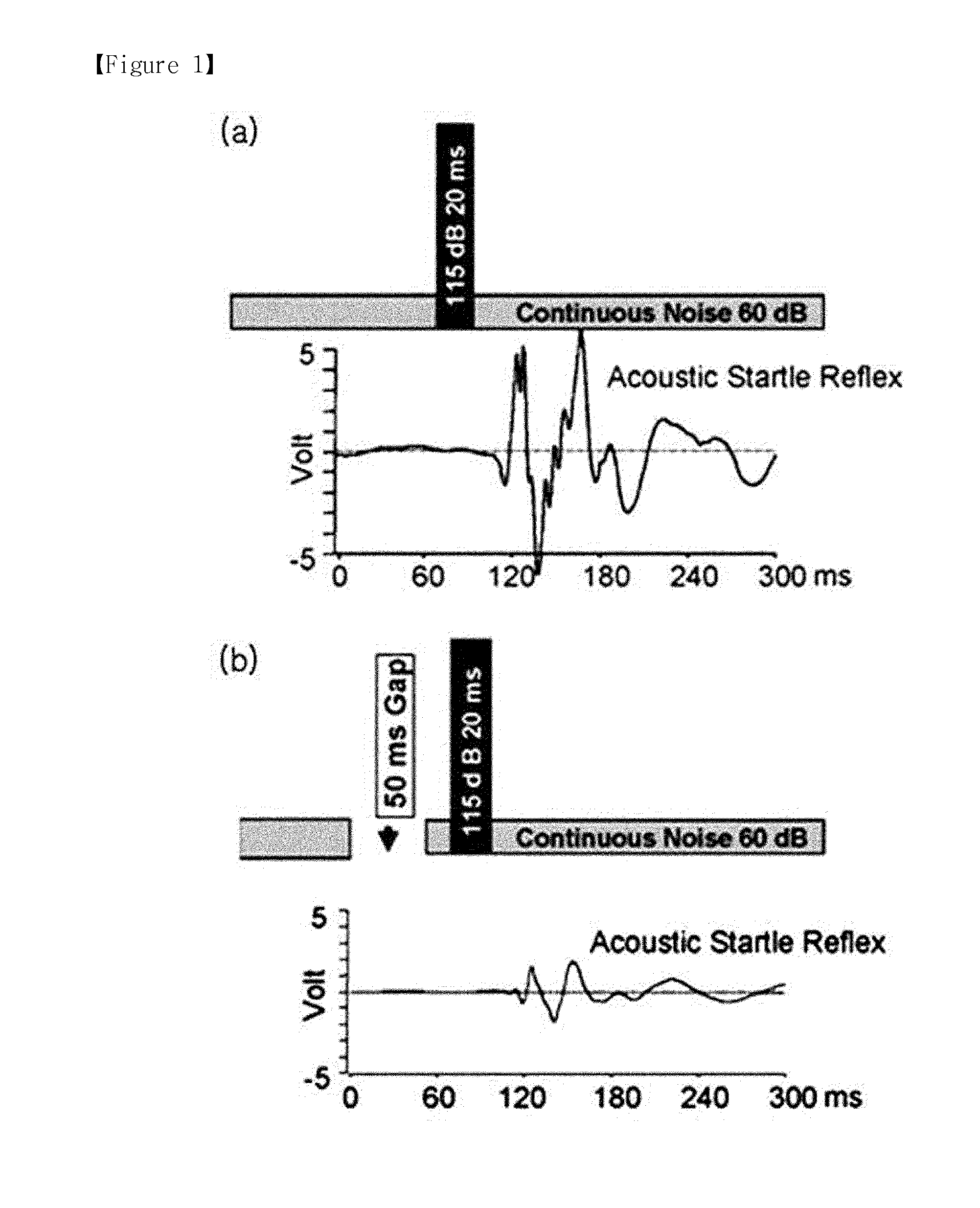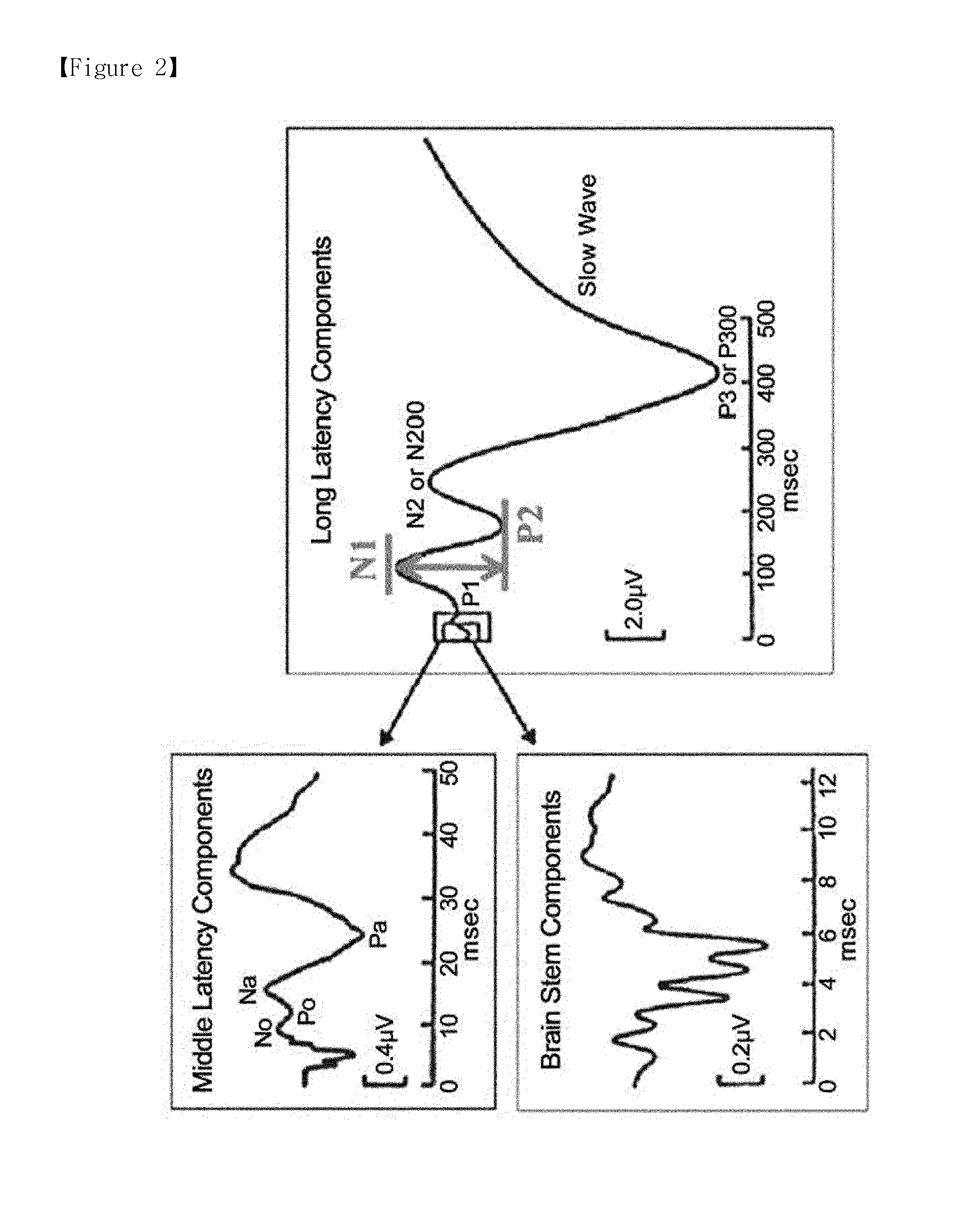Tinnitus testing device using brain waves and tinnitus testing method using same
a testing device and brain wave technology, applied in the field of tinnitus testing apparatus using brain waves and testing methods, can solve the problems of no reports of inventions applying the above-described principles to the testing of humans, the patient may have difficulty in daily life, so as to achieve the objective evaluation of tinnitus, effective cooperation in testing, and effective measurement of tinnitus
- Summary
- Abstract
- Description
- Claims
- Application Information
AI Technical Summary
Benefits of technology
Problems solved by technology
Method used
Image
Examples
embodiments
[0053]FIG. 2 is a graph showing in detail the N1 evoke d response and P2 evoked response measured by the tinnitus testing apparatus according to one embodiment of this invention.
[0054]When an auditory stimulus such as sound is applied to the human body, brainwave reactions occur including the Auditory Brain-stem Response (ABR), Middle Latency Response (MLR) and Late Latency Response (LLP).
[0055]Here the Middle Latency Response denotes a reaction occurring between approximately 15 and 50 msec after an auditory stimulus, and Late Latency Response denotes a reaction occurring from approximately 75 to 200 msec, and more specifically from about 80 to 100 msec, after the auditory stimulus; these reactions occur in the central auditory pathway.
[0056]The N1 and P2 reactions correspond to the Late Latency Response; as described below in this specification, by measuring the N1 and P2 reactions and the N1-P2 amplitude, the presence or absence of tinnitus can be measured more objectively.
[0057]...
PUM
 Login to View More
Login to View More Abstract
Description
Claims
Application Information
 Login to View More
Login to View More - R&D
- Intellectual Property
- Life Sciences
- Materials
- Tech Scout
- Unparalleled Data Quality
- Higher Quality Content
- 60% Fewer Hallucinations
Browse by: Latest US Patents, China's latest patents, Technical Efficacy Thesaurus, Application Domain, Technology Topic, Popular Technical Reports.
© 2025 PatSnap. All rights reserved.Legal|Privacy policy|Modern Slavery Act Transparency Statement|Sitemap|About US| Contact US: help@patsnap.com



